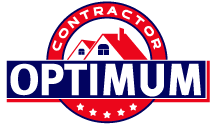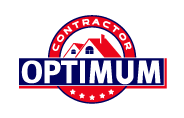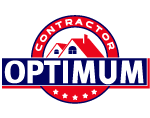Our COVID-19 Response
Coronavirus disease 2019 (COVID-19) is a respiratory illness caused by a virus called SARS-CoV-2. Our understanding of how the virus spreads is evolving as we learn more about it, so check the CDC website for the latest information and current list of symptoms. The virus is thought to spread mainly from person to person:
- Between people who are in close contact with one another (within about 6 feet).
- Through respiratory droplets produced when an infected person coughs, sneezes, or talks.
Recent studies indicate that the virus can be spread by people who are not showing symptoms. It may be possible that a person can get COVID-19 by touching a surface or object that has the virus on it and then touching their own mouth, nose, or possibly their eyes. This is not thought to be the main way the virus spreads, but we are still learning more about this virus. Older adults and people of any age who have serious underlying medical conditions may be at higher risk for severe illness from COVID-19.
Potential sources of exposure include having close contact with a coworker or member of the public who is ill with COVID-19 and touching your nose, mouth, or eyes after touching surfaces contaminated with the virus or handling items that others infected with COVID-19 have touched. Actions you can take include the following:
- Notify your supervisor and stay home if you have symptoms.
- Follow CDC-recommended steps if you are sick. You should not return to work until the criteria to discontinue home isolation are met, in consultation with healthcare providers, your employer, and state and local health departments.
- Follow CDC-recommended precautions and notify your supervisor if you are well but have a sick family member at home with COVID-19.
- Limit close contact with others by maintaining a distance of at least 6 feet, when possible.
- Limit the number of workers in small workspace areas such as job site elevators, trailers and vehicles, and spaces under construction if possible.
- CDC recommends wearing cloth face coverings in public settings where other social distancing measures are difficult to maintain, especially in areas where there is the significant community-based transmission of COVID-19.
- Cloth face coverings may prevent people who don’t know they have the virus from transmitting it to others.
- Cloth face coverings are NOT surgical masks or respirators and are not appropriate substitutes for them in workplaces where masks or respirators are recommended or required.
- Clean and disinfect frequently touched surfaces such as shared tools, machines, vehicles and other equipment, handrails, ladders, doorknobs, and portable toilets. Clean and disinfect frequently touched surfaces periodically throughout the shift but also:
- At the beginning and end of every shift
- After anyone uses your vehicle, tools, or workstation
- Limit tool sharing if possible.
- Practice proper hand hygiene. This is an important infection control measure. With appropriate hand hygiene, you do not need gloves to protect you from COVID-19. When possible, wash your hands regularly with soap and water for at least 20 seconds or use an alcohol-based hand sanitizer containing at least 60% alcohol.
- Key times to clean hands include:
- Before and after work shifts and breaks
- After blowing your nose, coughing, or sneezing
- After using the restroom
- Before eating and before and after preparing food
- After touching objects which have been handled by coworkers, such as tools and equipment
- Before putting on and after taking off work gloves
- After putting on, touching, or removing cloth face coverings
- Before donning or doffing eye or face protection (safety glasses, goggles, etc.)
- Do not touch your eyes, nose, or mouth.
- Use tissues when you cough, sneeze or touch your face. Throw used tissues in the trash and wash your hands or use a hand sanitizer containing 60% alcohol if a sink to wash your hands is not available.
- Key times to clean hands include:
Employers should have a COVID-19 response plan to protect workers, following CDC Interim Guidance for Businesses and Employers, and share this plan with you and your coworkers in languages you all understand. Small construction businesses should review the CDC small business guidelines. Your employer should take steps to:
Reduce transmission among workers:
- Take steps to help prevent the spread of COVID-19 if an employee is sick.
- Actively encourage sick employees to stay home.
- Sick employees diagnosed with COVID-19 shouldn’t return to work until the criteria to discontinue home isolation are met, in consultation with healthcare providers and state and local health departments.
- Provide employees with accurate information (in a language they understand) about COVID-19, how it spreads, and risk of exposure.
- Provide workers with basic facts.
- Conduct toolbox talks on all job sites to explain the protective measures in place.
- Be aware that some employees may be at higher risk for severe illness. Implement specific policies to minimize face-to-face contact for these employees or assign work tasks that allow them to maintain a distance of at least 6 feet from other workers, customers, and visitors, or to telework if possible.
- Provide training to employees on proper handwashing practices and other routine preventative measures. This will help prevent the spread of many diseases, including COVID-19.
- Provide employees with access to soap, clean running water, and materials for drying their hands, or if soap and water are not readily available provide alcohol-based hand sanitizers containing at least 60% alcohol at stations around the establishment for use by both workers and customers.
- Place handwashing stations and/or hand sanitizers in multiple locations (including in or adjacent to portable restrooms) to encourage hand hygiene.
- Explore alternative ways to promote hand hygiene if there is difficulty sourcing hand sanitizer and running water is not available on site. Some examples may include:
- Install accessible temporary or mobile handwashing stations, making sure there is enough water, soap, and a way for people to dry their hands (e.g., paper towels, hand dryer).
- Provide a large (5+ gallon) bucket with a lid and tap that can be used to provide water for handwashing. If this method is used, the water tap should be regularly cleaned and disinfected, and the contaminated wastewater must be collected and treated in accordance with local laws and environmental regulations. Provide fresh clean water daily.
- Depending on the size or configuration of the job site, there may need to be multiple handwashing stations available to accommodate the workforce while maintaining social distancing, and stations may need to be restocked during the course of the day to maintain adequate handwashing supplies.
- Develop and implement social distancing guidance for the workplace to maintain a distance of at least 6 feet between workers when possible.
Maintain a healthy work environment
- Institute measures to physically separate and increase the distance between employees, such as the following:
- Modify work schedules to stagger work, provide alternating workdays or extra shifts to reduce the total number of workers on a job site at any given time.
- Restrict access to reduce the number of workers in enclosed and confined areas at one time. Confined and enclosed areas (e.g., trailers, small rooms in buildings under construction) should be identified and access should be restricted to essential personnel only. Enclosed spaces (e.g., toilets, break areas) are potential transmission areas and should be treated accordingly. Time spent in these areas should be minimized.
- Rearrange administrative area workstations so that workers can stay at least 6 feet away from other workers.
- Install shields or barriers, such as plexiglass barriers, where possible.
- Remove or rearrange chairs and tables or add visual cue marks in break areas to support social distancing practices between workers. Identify alternative areas to accommodate overflow volume.
- Disinfect break or lunchroom areas between each group using the areas.
- Maintain social distancing when visiting lunch trucks or construction site vendors.
- Limit casual (social) conversations that normally occur at work.
- Cancel or postpone in-person meetings/training whenever possible. If you must meet, spread out to a distance of 6 feet or more between attendees.
- Reduce the number of individuals at meetings, including worker orientations, to increase the distance between individuals.
- Conduct a hazard assessment to determine if hazards are present, or are likely to be present, for which workers may need personal protective equipment (PPE). CDC and OSHA have recommended PPE for some types of work activities when engineering and administrative controls cannot be implemented or are not fully protective.
- Employers are required to determine, select, provide, and train on correct PPE use and application for their workers’ specific job duties (see 29 CFR 1926 Subpart Eexternal icon).
- Place posters that encourage staying home when sick, cough and sneeze etiquette, signs and symptoms of COVID-19, and proper hand hygiene practices at the entrance to the workplace and in other workplace areas where they are likely to be seen.
- Provide tissues and no-touch disposal receptacles for employees to use.
- Clean and disinfect frequently touched surfaces. If the surfaces are visibly dirty, clean them prior to disinfecting. To disinfect, use products that meet EPA’s criteria for use against SARS-CoV-2external icon, diluted household bleach solutions that are prepared according to the manufacturer’s label for disinfection, or alcohol solutions with at least 70% alcohol, and that are appropriate for the surface. Follow manufacturer’s directions for use.
- Clean workspaces and breakrooms at least once per shift or as often as workers change workstations.
- Provide worker training on manufacturer’s directions for disinfectant use and provide workers with any additional PPE required for disinfection.
- Provide disposable disinfectant wipes (when available) so that surfaces commonly touched can be wiped down.
- Follow all applicable local, state, and federal regulations and public health agency guidelines.
Maintain healthy business operations
- Designate a safety and health officer to be responsible for responding to COVID-19 concerns at every jobsite. Workers should know who this person is and how to contact them.
- Implement flexible sick leave and supportive policies and practices. Consider drafting non-punitive emergency sick leave policies if sick leave is not offered to some or all employees. Employers should not require a positive COVID-19 test result or a healthcare provider’s note for employees who are sick to validate their illness, qualify for sick leave, or to return to work.
- Provide information on whom to contact if employees become sick. If an employee is confirmed to have COVID-19 infection, employers should inform fellow employees of their possible exposure to COVID-19 in the workplace but maintain confidentiality as required by the Americans with Disabilities Act (ADA).
- Reach out to local public health officials to establish ongoing communications to facilitate access to relevant information before and during a local outbreak.
Stay informed. Talk to your employer, supervisor, or union representative who is responsible for responding to COVID-19 concerns. See these sources for more information on worker exposures to COVID-19:
Construction COVID-19 Checklists for Employers and Employees
CDC Interim Guidance for Businesses and Employers to Plan and Respond to Coronavirus Disease 2019
CDC Prepare your Small Business and Workers for the Effects of COVID-19
NIOSH COVID-19 Workplace Safety and Health Topic
CDC COVID-19
OSHA COVID-19external icon
CPWR COVID-19 Standards for Construction Sitespdf iconexternal icon





